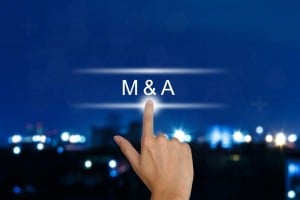How To Sell A Business For Maximum Value
How To Sell A Business For Maximum Value
Every business owner wants to know how to sell a business for maximum value. Perhaps the first step is to understand the most important metric that a buyer will use in valuing your company.
All entrepreneurs interested in selling their company will hear the acronym “EBITDA” (short for “earnings before interest, taxes, depreciation, and amortization”) being tossed around. EBITDA is a popular valuation metric that is usually calculated to approximate a company’s “free cash flow.” To find your company’s EBITDA, all you need to do is take its net income, then add back interest, taxes, depreciation, and amortization.
If you’re selling your company, however, you should be wary about over-relying on EBITDA calculations to determine the value of your company. While popular multiples such as Enterprise Value divided by EBITDA can provide basic insights into the relative value of your company, at the end of the day, such multiples are never the be-all, end-all of valuation.
The EBITDA metric itself has many shortcomings and limitations. Sophisticated buyers are acutely aware of these issues and it’s the major reason why entrepreneurs sometimes have trouble understanding why a professional buyer will place a lower value on their company than the simple EBITDA times a multiple that the entrepreneur used.
Professional or sophisticated buyers prefer to value a company based off its true free cash flow, which represents the amount of cash a company produces that is immediately available to shareholders and debtholders.
While EBITDA is often compared to “free cash flow,” in reality, the two metrics are actually calculated somewhat differently (both are based on EBIT, or earnings before interest and taxes). To recap,
EBITDA = EBIT + Depreciation + Amortization
whereas,
Free Cash Flow = EBIT * (1 – tax rate) + Depreciation + Amortization – Changes in Working Capital – Capital Expenditures
As you will note, there are three main differences between the metrics: Free Cash Flow includes
Taxes
Changes in working capital
Capital Expenditures
Taxes, working capital, and capital expenditures are important to the well-being of a company, yet EBITDA completely ignores these items. This is the fundamental problem. EBITDA is only an accounting metric, which cannot accurately represent how much free cash flow your company actually produces. And, it’s true free cash flow that drives the value for your company. Sophisticated or professional buyers aren’t seeking a return on their investment in EBITDA, they want it in cash or free cash flow.
Thus, an entrepreneur that is interested to sell a business for maximum value should recognize the difference between EBITDA and true free cash flow. For many businesses, these two numbers are completely different.
For over 28 years, Versailles Group's skill, flexibility, and experience have enabled it to successfully close M&A transactions for companies with revenues between US$2 million and US$250 million. Versailles Group has closed transactions in all economic environments, literally around the world. Versailles Group provides clients with both buy-side and sell-side M&A services, and has been completing cross-border transactions since its founding in 1987.
For more information, please contact
Donald Grava, Founder and President








